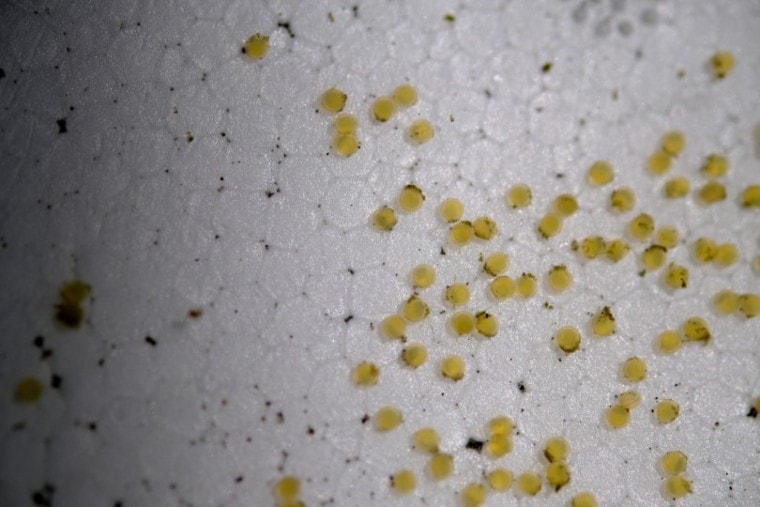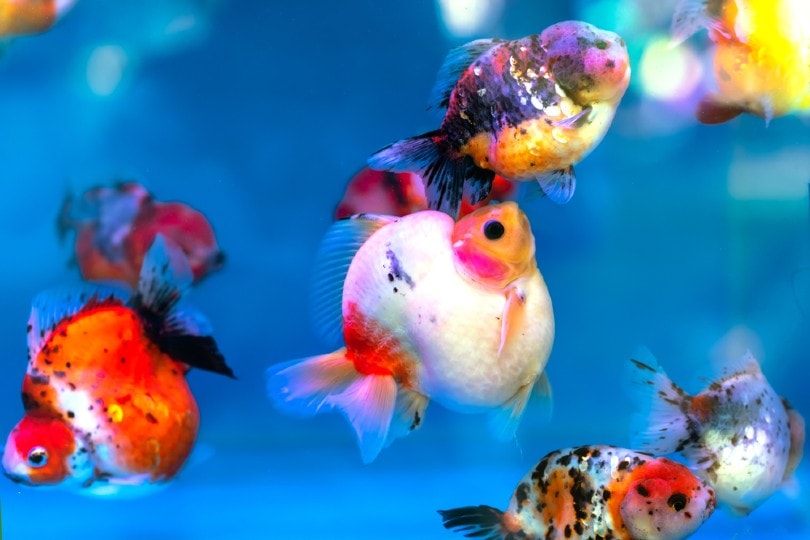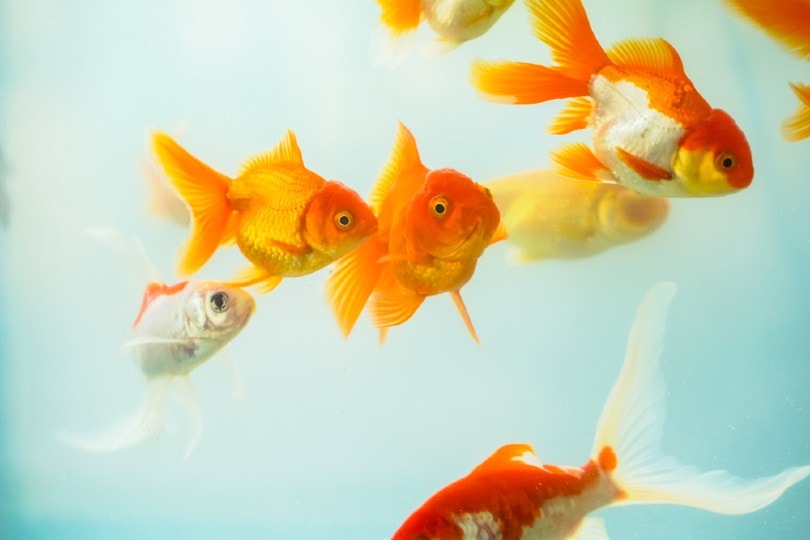
Goldfish fry (newly hatched goldfish) is one of the cutest and most interesting types of fry in the aquarium hobby. Goldfish can lay over a hundred eggs and the eggs can develop into delicate fry that will begin to rapidly grow when cared for properly.
To get a healthy batch of goldfish fry, you first must look after their eggs! If you have other types of aquatic life in your aquarium, you will also need help identifying what animal laid that batch of eggs. Luckily, goldfish eggs are easy to identify when you know what to look for. Once you get the hang of successfully identifying their eggs, you will also learn how to determine if the eggs are fertile or not.
Both goldfish parents have no role in parental care for both the eggs and the fry. They will try to eat the eggs and newly hatched fry! This means the eggs will have to be removed to a special incubation tank, away from the parents.
Goldfish Breeding
A male and female goldfish will take part in a spawning ritual where the male goldfish will chase the behind of the female goldfish. This will occur when mating season is around or if the conditions are ideal for breeding. Fertilization occurs outside the body and involves both the male and female to produce a healthy batch of fry. An egg-carrying female will be chased till she deposits eggs along the bottom of the aquarium or on top of decorations. The male goldfish will then fertilize the eggs with milt (fish sperm).
Goldfish do not stick together after mating and will part ways. This allows both goldfish to mate with other goldfish in the tank. As soon as the eggs are laid, the parents will attempt to eat them. It is therefore important to remove any sort of egg material gently from the tank with the same conditions and water and into a small incubation tank.

Expecting Female Goldfish
Your female goldfish will have an abnormally large belly and flattens towards the middle. They will also have the sides of their stomach stick out on either side of their body when viewing from above. In some cases, you may also see outlines of the eggs through the stretched abdomen. The female will also appear restless and less active than usual.
If you're new to the world of goldfish keeping or are experienced but love to learn more, we highly recommend you check out the best-selling book, The Truth About Goldfish, on Amazon. From diagnosing illnesses and providing correct treatments to proper nutrition, tank maintenance and water quality advice, this book will help you to ensure your goldfish are happy and to be the best goldfish keeper you can be.
Identifying a Goldfish Egg
Goldfish eggs do look like a variety of fish and invertebrates. An easy rule to determine what laid the batch of eggs inside of the tank is to find out all the different types of aquarium life in your tank. If you have a goldfish-only tank, there is a high chance it can only be goldfish eggs. If you have snails or other suitable tank mates, you will need to take into consideration what their eggs look like.
Goldfish eggs appear as white to yellow or orange bubbles. They are small delicate dots that will usually get stuck on the substrate and leaves inside of the tank. Goldfish eggs are incredibly sticky and may be hard to remove. Goldfish eggs will also be plentiful as the female can lay over 300 eggs depending on her age, size, and health.
Since the eggs will be hard to remove, you want to place a spawning mop or a variety of live plants for the goldfish eggs to attach themselves. The more hidden they are the less likely the parents will be able to find and eat them.
How to Hatch Goldfish Eggs
Caring for Goldfish Eggs and Fry
Caring for the eggs and fry is simple if you meet their temperature and water requirements. They should both have constant access to clean and oxygenated water. The eggs can stay inside of the hatchery until they are large enough to not be eaten by the adults. They should be twice the size of their parents’ mouth.
Remove any unfertilized eggs by using a mixture of methylene blue and dechlorinated water to get rid of the fungus the infertile eggs will develop into.
Raise the fry on newly hatched baby brine shrimp and fry food from your local fish store. The fry should take a few weeks before they start to resemble their parents. At this stage, you will be able to tell what color they will be as well as distinguish their features. Gender will only be revealed later in their growing phase. So, if you do not wish to have any more goldfish fry on your hands, you do not need to split the fry up according to gender.
Final Thoughts
If you plan to regularly breed your goldfish, you should get used to the identification and raising process. If you happen to have accidentally found eggs at the bottom of the aquarium and you have had a very round female with a male chasing her, it is more than likely a batch of goldfish eggs. Females can lay eggs whether there is a male around them or not, but the eggs that she deposits will be infertile. It is not uncommon to witness two male goldfish chasing each other for dominance over a female in the tank so it is best to not confuse the two.
We hope this article has helped you to successfully identify and raise a healthy cluster of fry.
Featured Image Credit: stockt0_0, Shutterstock










